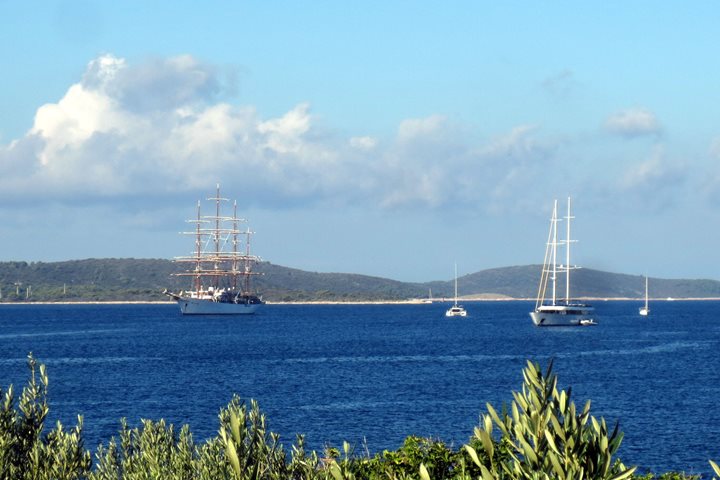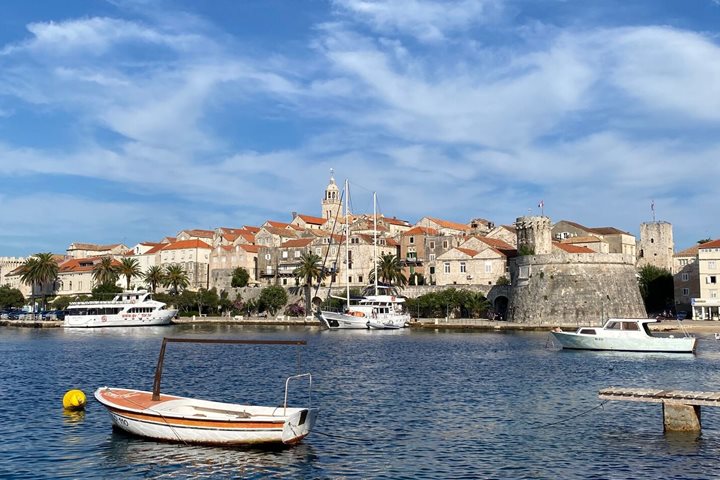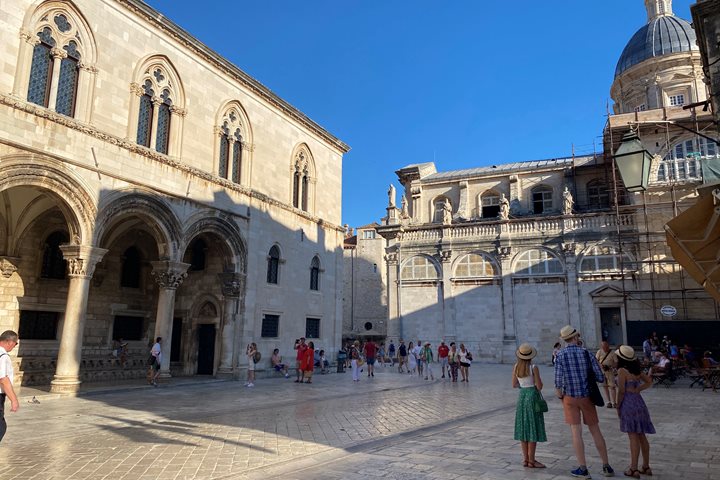We docked in the southern Albania town of Sarandë at 7:30 a.m. with the sun shining brightly on a glistening Ionian Sea. We have now left the Adriatic and are moving ever closer to Homer’s “wine-dark” seas. The large Greek island of Corfu is directly across the channel 1.5 miles away. We have entered the world of the ancient Hellenes. Our first stop this morning is the archaeological site of Butrint, an aniquet cityscape that has seen continuous habitation for 2,500 years.
We boarded our buses to visit the UNESCO World Heritage site of ancient Butrint at 8:30 for a pleasant ride through Sarandë and the southern Albanian countryside. The many unfinished buildings testify to the legacy of the isolation and impoverishment of post World War II Albania. Today the average annual salary is about $3,000 with approximately 15% unemployment. The best five-star hotel in Sarandë is less than $100 per day.
Butrint is quite unique as it contains at lest four distinct archaeological levels: Hellenic, Roman, Byzantine, and Venetian. The Greek theatre is surely one of the most impressive sites in the area as it is cut into the hillside, has quite good acoustics, and originally sat 2,500 in the audience. The 6th century Byzantine baptistery has the most wonderful mosaic floor and immersion baptismal font. It is interesting to note whereas today Butrint seems quite remote and isolated, Butrint during the Roman period had 15,000 inhabitants. Cicero’s closest friend Atticus had large estates here, and Cicero visited him here.
We next visited the Ottoman fortress in Sarandë built during the reign of Sulieman the Magnificent. The views from the top of the fortress were spectacular. Corfu seemed so close that one could touch it. We were treated to a selection of Albanian wines and foods. A special treat was a performance by a traditional Albanian flautist playing what appeared to be an ancient panpipe. The most curious thing about his playing was that he blew into the pipe from a hole in his teeth. The sound was quite remarkable.
We left Sarandë and had a wonderful lunch on board. Grace gave a very nice lecture on the “Myth of Maps,” pointing out how the same data can be used to suggest quite different realities. I shall never in the future read a map without skepticism. We next were able to watch Irvine Johnson’s quite remarkable video of his sailing around Cape Horn in the late 1920s—all his videos were taken with a primitive Kodak camera. He narrated the video 50 years later and it is simply a remarkable film. I suppose we all have favorite anecdotes from the film, but I love the dog you could not pet who would occasionally bite the sailors for sheer entertainment.
After dinner we were treated to the Sea Cloud “Shanty Singers”—members of the crew who are interested in these old traditions. Here we heard a repertoire of old sailing songs, some designed to assist in doing the work of the ship, some nostalgic for a loved one left ashore, and some about grog. It was quite wonderful.
All of us went to bed with memories of a very rich day.







